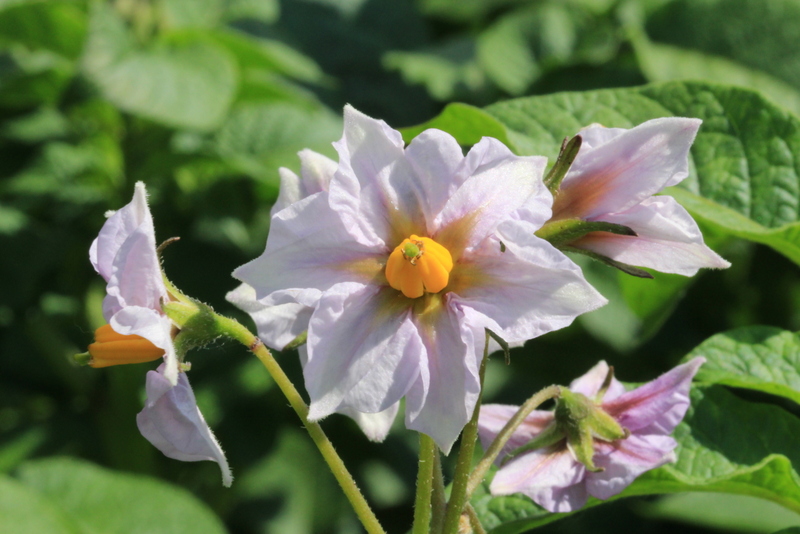Insights from Israel
In November I flew to Israel and attended the European Association for Potato Research pathology meeting in Jerusalem. It was a fantastic opportunity to visit amazing historical sights, soak in the culture, and take some fun pictures of the NDSU Extension logo on my backpack. Don’t worry though, I also learned a lot about potato production in Israel and some of the disease problems potato producers face in Europe and the Middle East.
Potatoes are the most important vegetable grown in Israel and are an important crop in the Negev desert region in the southern part of Israel. Soils in Israel are sandy with low organic matter (<0.6%). There are two seasons for potato production; autumn/winter (planting in September-November) and spring (planting in December-February). The winter crop covers approximately 19,000 acres and yields 325 cwt/acre while the spring crop covers 18,000 acres and yields 445 cwt/acre. Approximately 56% of the potato crop is used for local consumption and the rest is exported to Europe. Cultivars grown are Charlotte, Desiree, Exquisa, Kolibri, Manito, Maris Peer, Mozart, Nicola, Rodeo, Santana, Sifra, and Winston. An interesting cultivar that is gaining predominance in Israel and many other countries is Sifra, a white-skinned and white-fleshed fresh market potato that has a low nitrogen requirement and uniform set.
Being a desert region rainfall is between 1 and 12 inches per year and potato production requires irrigation. Israelis mix many sources of water for irrigation to balance salinity levels and ensure the proper nutrient balance. The types of water they use are seasonal flood waters that are trapped and stored in reservoirs, reclaimed sewage water, desalinated water, and brackish water from local wells. The majority of irrigation is completed by sprinklers, however they are also starting to irrigate in some fields with drip lines. The greatest benefit of drip irrigation is the reduction in water use. Drip irrigation also enables the use of water that has a higher salinity content, fertigation in the root zone of potatoes, and the activation of herbicides or herbigation (Image 1). Drip irrigation can be costly, but drip lines with thick walls are used on 14 to 16 crops or 7 to 8 years.
Growing potatoes in a desert environment has many challenges. One such challenge we do not face is sandstorms. These sandstorms cause extensive leaf damage and can even bury potatoes on field edges. To combat disease entrance through these wounds, systemic and protectant fungicides are relied upon. Aphids are a problem because there are potatoes growing for nearly 10 months per year and Israel faces similar problems as we do with PVY and PVY strains. Soilborne diseases are similar to what are present in the United States. The most problematic disease in seed potato in Israel is Dickeya solani which causes blackleg-like symptoms. This bacterial disease is introduced through seed purchased from European countries. While on a tour of potato fields it was easy to find wilting plants in newly planted potatoes fields (Image 2). Dickeya solani is more aggressive than the Pectobacterium species (typical soft rot and blackleg) we face in the United States.
For more pictures from my trip to Israel go to the NDSU / U of M Potato Extension Facebook page at www.facebook.com/potatoextension or click here.





